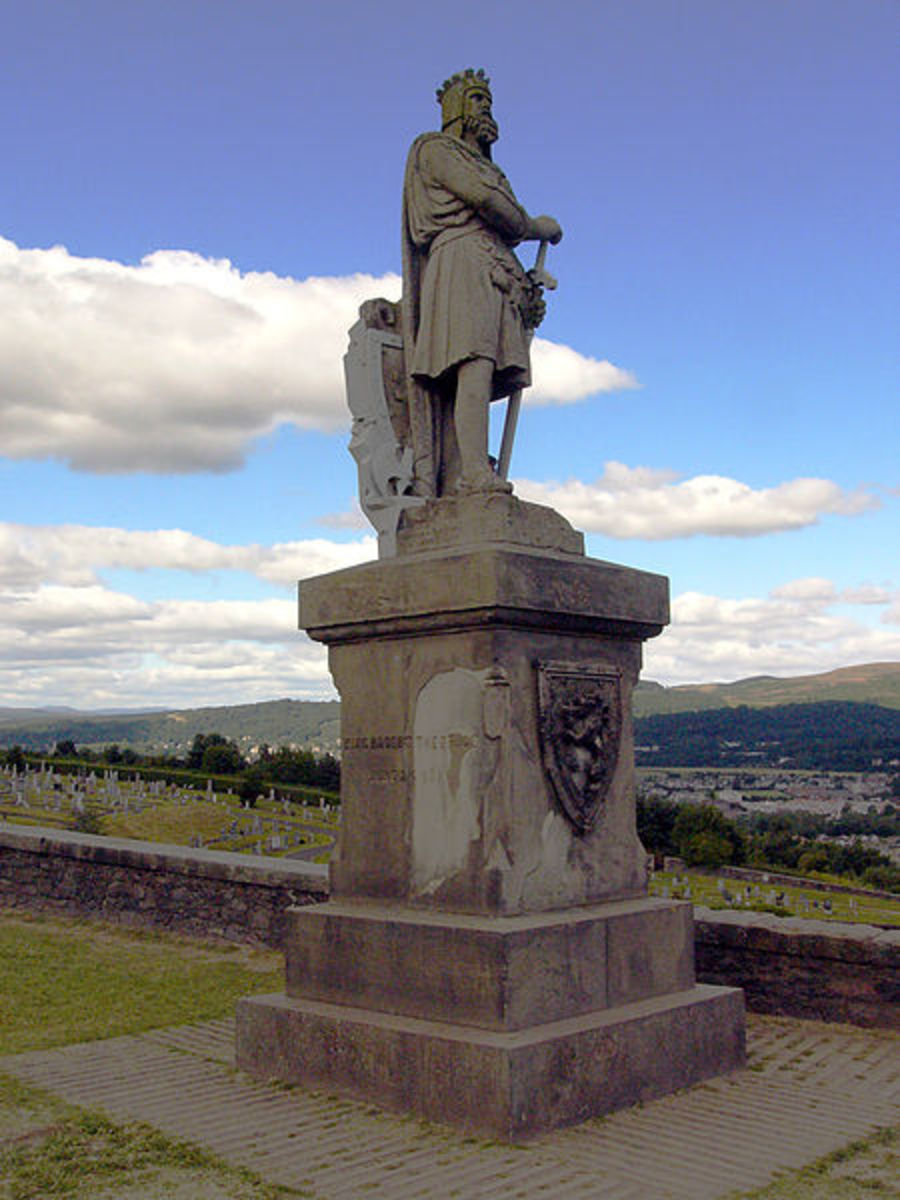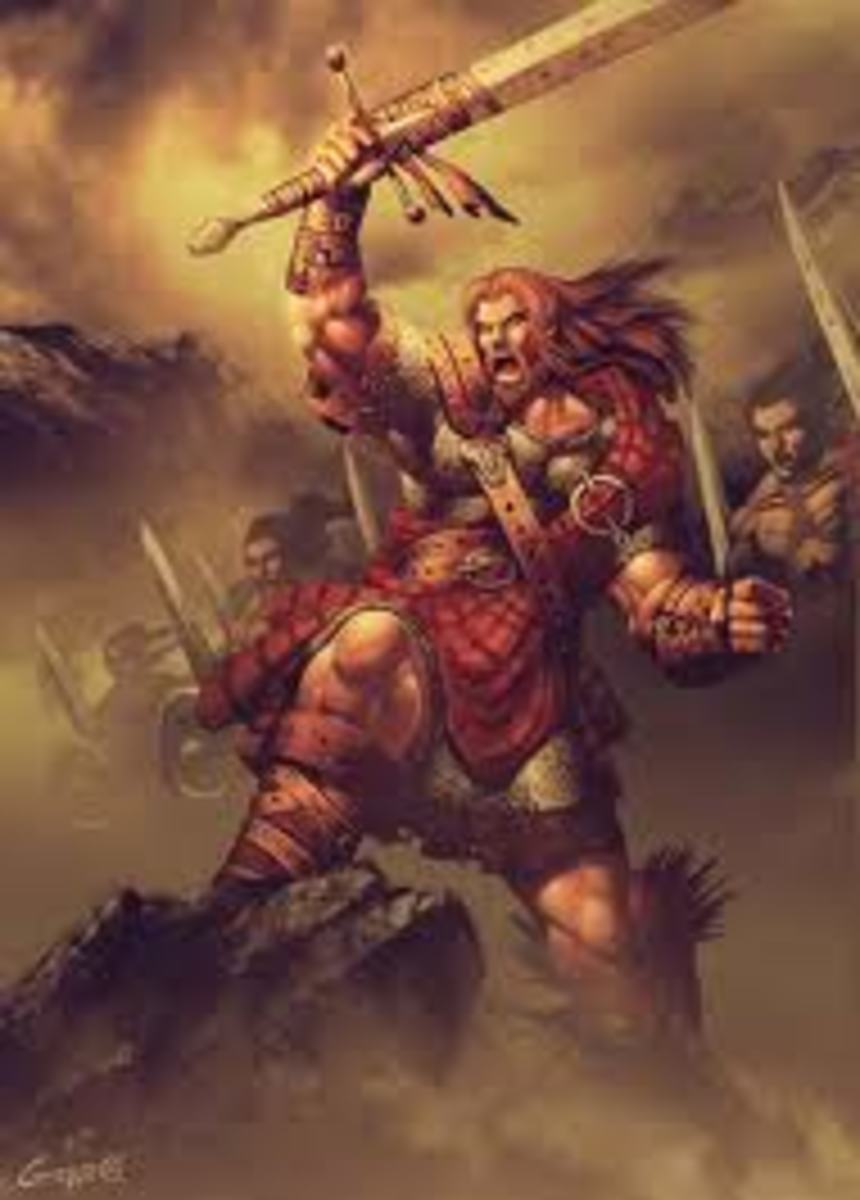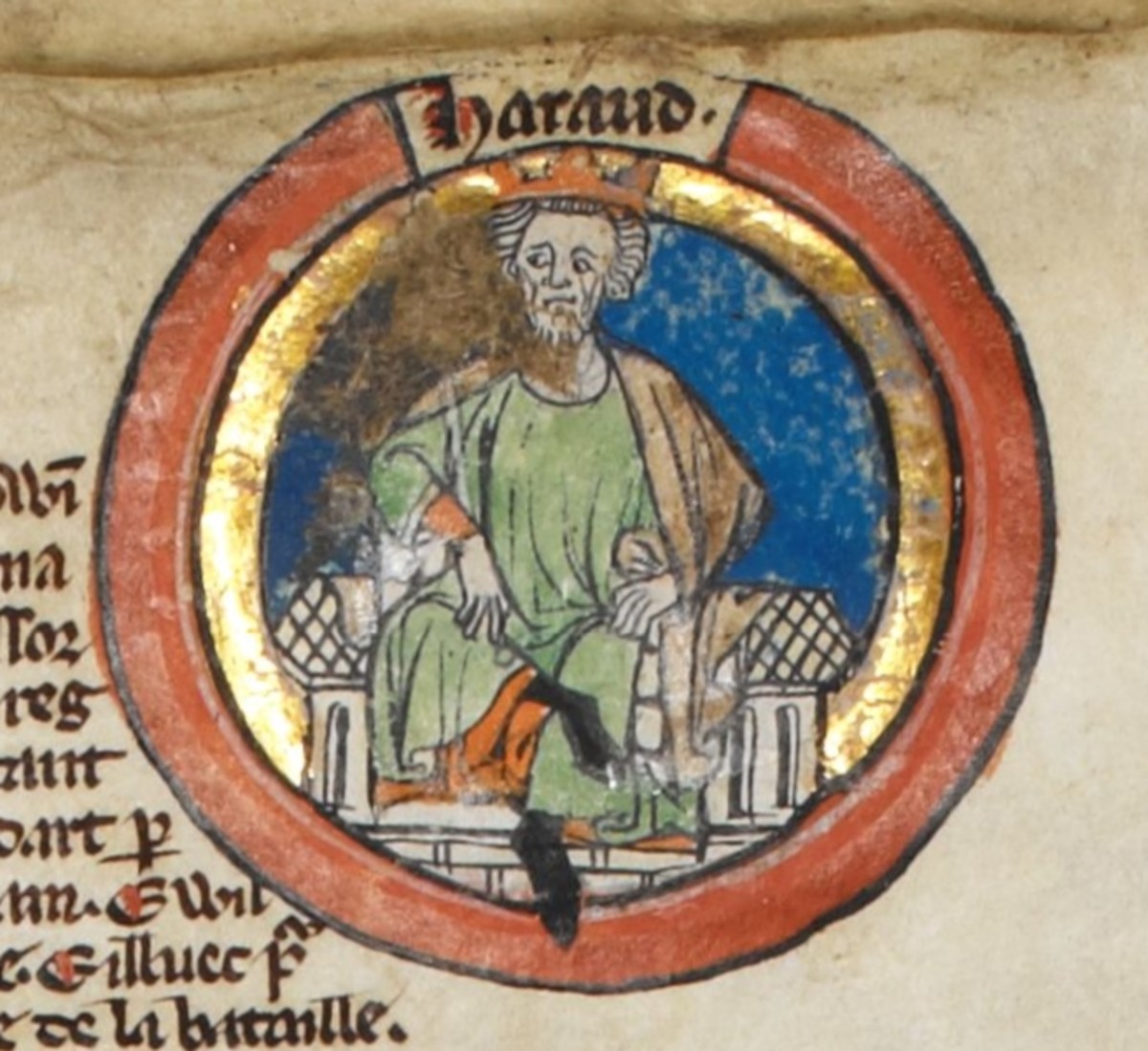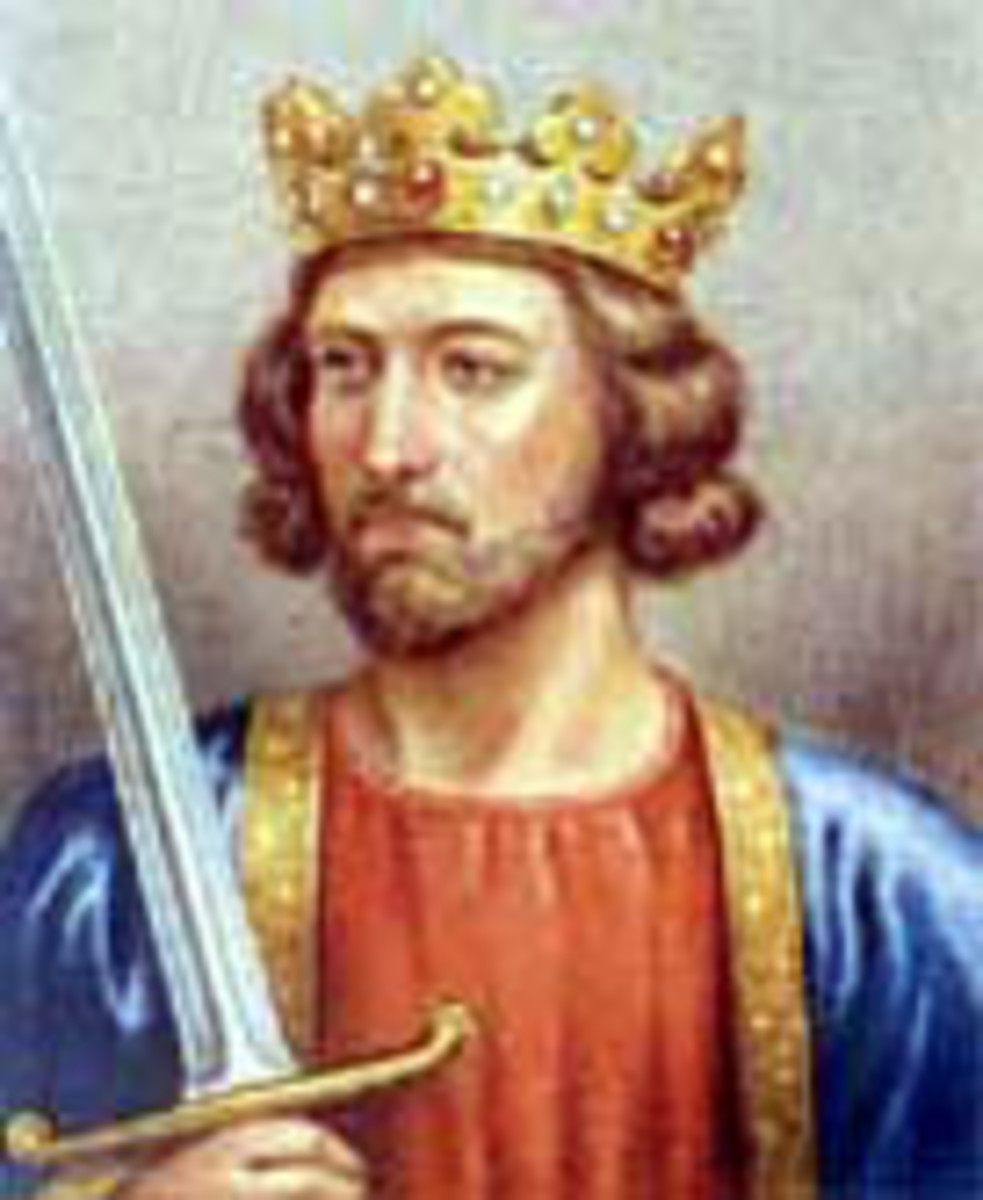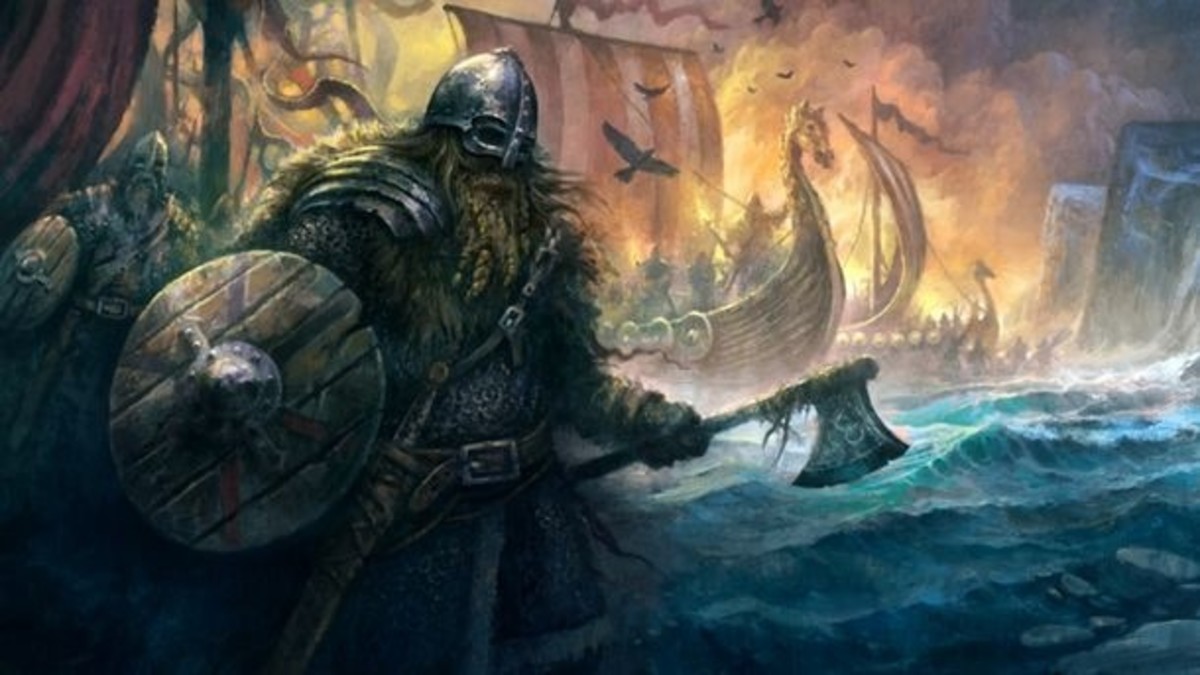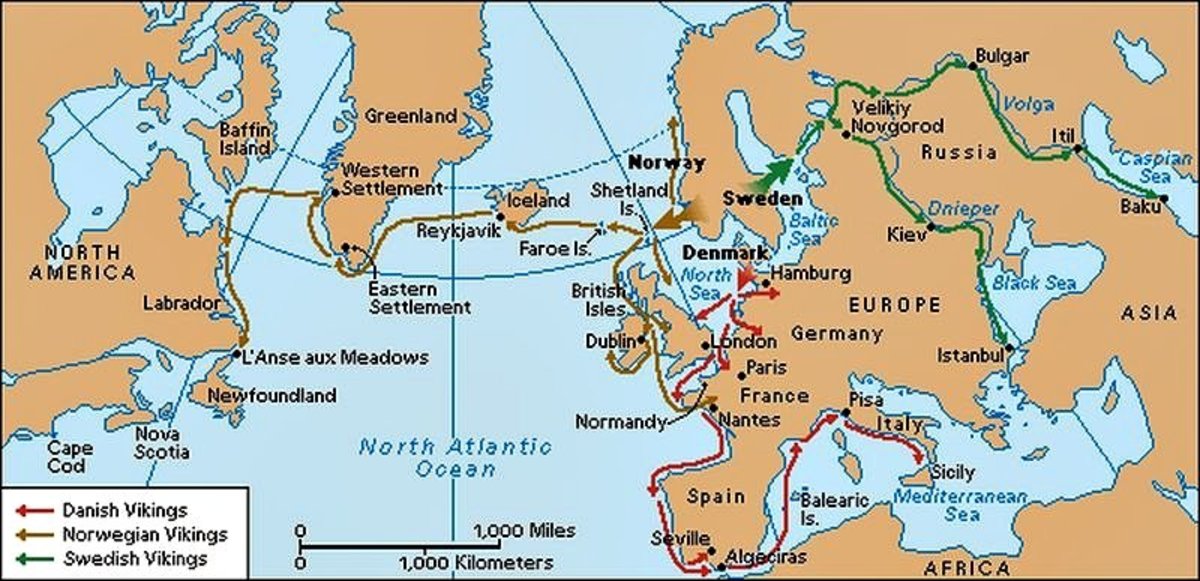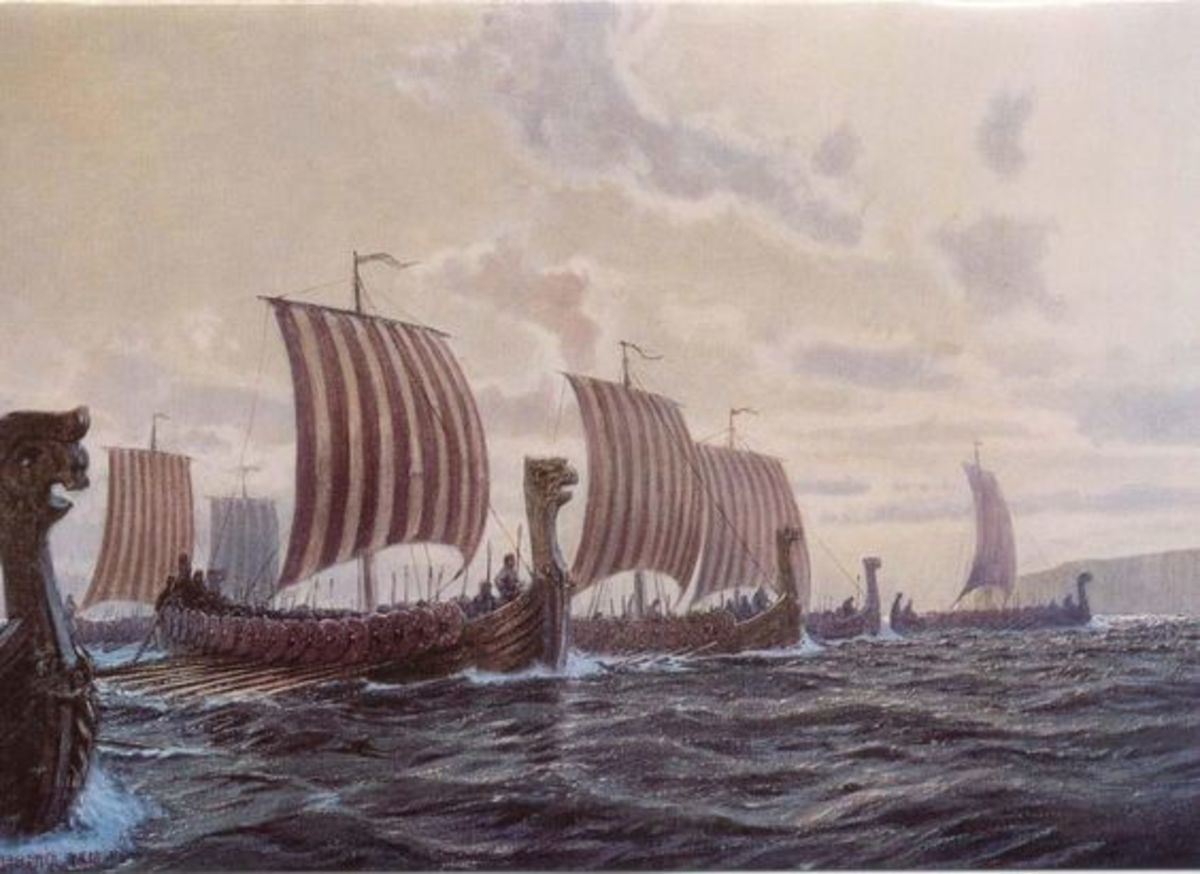- HubPages»
- Education and Science»
- History & Archaeology»
- History of Europe
After King Alfred (History in a Nutshell No.8)
Upon the death of King Alfred in the year 899, his 22 year old son Edward became King of Wessex. Between Edward and his sister Ethelfleda, these two children of King Alfred secured England against further Danish assaults; they fortified the towns all over the kingdom. In fact, it was Ethelfleda, ruling over the Kingdom of Mercia, who first began to heavily fortify the towns to protect them from further Viking assaults. Edward followed her wise example by doing likewise in Wessex.
Mercia, under Ethelfleda's leadership, continued as it had always done as a separate kingdom, yet gave its allegiance to the High King or Bretwalda, Edward, King of Wessex. At this time, the Welsh people and the Scots gave their allegiance to Edward also, as their lord and sovereign. Even the Danes north of the Humber River in Yorkshire were subject to him.
It seemed at last that the legacy which King Alfred had established for a truly United Kingdom, was finally manifesting. Ethelfleda died around the year 920 AD and Edward in 925. Edward's successor was his able son, the 30 year old Athelstan.
King Athelstan
According to legend, King Alfred had recognised something in his grandson Athelstan that would make him a great king. Alfred had highly favoured the child and gave him gifts including a purple robe, a sword-belt or baldric studded with gems and a sword in a golden sheath. It was a foretelling of the role that Athelstan would play in the future of the kingdom.
By the year 933 there was a general rebellion against King Athelstan from many quarters of the country. The Welsh arose against him, along with the Scots and the Danes. More Vikings poured into the country from Norway and joined forces against Athelstan and Wessex. Athelstan found himself beset on all sides by hordes of enemies.

The Battle of Brunanburh
However, Athelstan defeated them all at the great and decisive battle of Brunanburh in the year 937 AD. His principle enemies were King Olaf of Dublin, (the Danes had invaded Ireland long before) King Constantine of Scotland and Owen of Strathclyde. The Anglo-Saxon Chronicle tells us that there had never been seen so much death and carnage before in any battle on English soil.
Many historians have considered that the battle of Brunanburh was a decisive battle in the sense that it finally united all of England under the High King, or Bretwalda, Athelstan. Prior to this battle, Wessex was the principle kingdom, but other lesser kingdoms still ruled over their own territories as vassal kings under the overlordship of Wessex. The battle of Brunanburh swept all of this away, at least for a while.
The actual site of this famous battle remains a mystery however, although many scholars and historians have posited several possible locations.
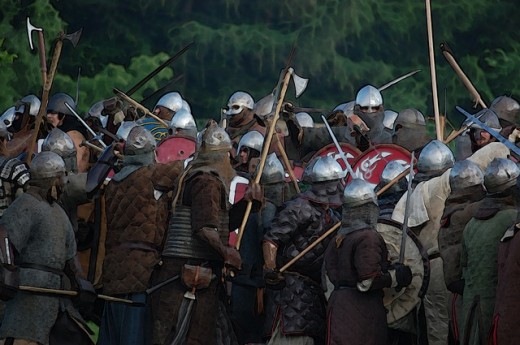
Subsequent Rulers
King Athelstan died in the year 939 to be succeeded by his half-brother Edmund, aged just 18 years old. Yet again, the formerly defeated enemies of Athelstan rose up against Wessex and England again, but King Edmund resisted them. His reign was short, and he died at the hand of an assassin's knife in the year 946, aged just 24 years old.
Following Edmund's demise, his brother Edred became king, and he also fought against the enemies of England and Wessex, following in the line of King Alfred, then Alfred's son Edward, then Alfred's grandson, Athelstan, and his brother Edmund.
We must not forget, that despite the many English victories over their Welsh, Scottish and Viking enemies, the Danes had been settled in England now since the days of King Alfred, and to an extent, even prior to that. The Danelaw still existed, covering the areas of East Anglia all the way up to Yorkshire and Northumberland. This system of law was of Danish origin and custom, and although subject under English rule, was basically self-governing.
We must also remember that from very ancient times, the British peoples have ever been of mixed racial heritage, and it is certain that Celtic, Roman, Anglo-Saxon and Scandinavian bloodlines were flowing in a great many people throughout the kingdom, due to intermarriage and also no doubt, to extramarital circumstances. The English peoples were truly of a mixed breed, and defining them as separate races would become increasingly less clear.
Eric Bloodaxe
Whilst King Edred was still on the throne of Wessex, there appeared now another Viking threat. This time it came from Eric Bloodaxe. Rarely was there a more gory title than the appellation Bloodaxe, so given to King Eric, a Norwegian, who raided the coasts of England. He had been deposed as king in his home country, and now wanted to establish a kingdom of his own abroad. He joined the Vikings that were already well established in Northumbria, in northern England, where they lived under the Danelaw.
Eric planned to establish a massive Viking kingdom for himself in England, where he now became king of Northumbria. He then raided in Scotland and around the coasts of Ireland. However, despite the ambitions of Eric Bloodaxe and his terrifying name, in the year 954 AD Eric perished in the battle of Stainmore, in Westmorland in the north-west of England. His death ended all further hopes of an independent Viking kingdom in Northumbria. King Edred of Wessex now took over rulership of Northumbria.
King Edgar and St. Dunstan
In the year 955, Edgar, a young boy of 12, became King of Mercia, now the more powerful of the English kingdoms, gaining rulership over both Wessex and Northumberland. This young king's rule came in a rare time of peace for England, in which Edgar was advised by his spiritual teacher Dunstan, the Archbishop of Canterbury.
The ascent of Mercia over Wessex was due to the fact that Edwig, Edgar's older brother, who had become King of Wessex, died just two years into his reign, which meant that the crown passed to Edgar and made Mercia the senior kingdom once more.
However, Edgar was not actually inaugurated as king until the year 973, when Edgar was in his thirtieth year. It seems that Dunstan, who controlled the religious life of the land at that time, had wanted to prepare Edgar spiritually first, before he received the responsibility of the crown; it was now that both Crown and the Church were blended as one, inseparable as both a temporal rulership and as a spiritual one.
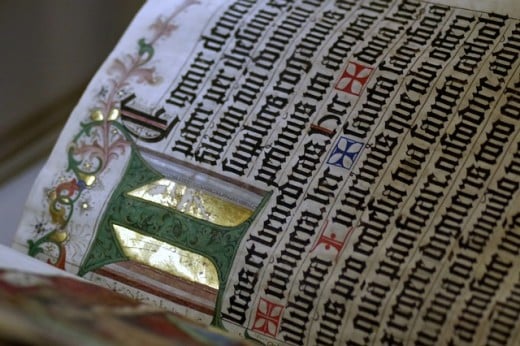
Dunstan (later canonized by the Roman Catholic Church as St. Dunstan) wanted to ensure that Edgar was spiritually prepared to wear the crown. The ceremony of coronation was an anointing ceremony, as important as any religious anointing of a priest. Edgar was therefore, a Priest-King and the whole nation would now undergo a vast spiritual revival under his kingship. Without the threat of constant warfare, there was now the available time and energy for such higher pursuits.
The monasteries flourished and illuminated manuscripts poured out of the artistic hands of the busy monks. Even the language of English was now widely regarded in Europe as Britain became a strong centre of learning. It was swiftly becoming a strong nation of culture, religious piety and knowledge.
Edgar, like many of his day, did not live long to enjoy his temporal and spiritual leadership of England. He died, aged 32, in the year 975, just two years after his coronation. His death ended a period of unprecedented peace for England. However, that peace was to be short-lived and yet to be shattered once again.

© 2019 S P Austen

